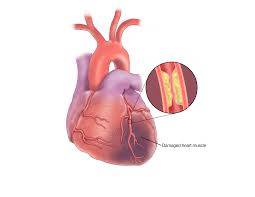Sure, let's break down coronary artery disease (CAD) into its causes, signs, effects, and solutions.
**Causes of Coronary Artery Disease (CAD):**
1. Smoking
2. High blood pressure
3. High cholesterol levels
4. Diabetes
5. Obesity
6. Sedentary lifestyle
7. Family history of CAD
8. Age (risk increases with age)
9. Gender (men are at higher risk)
10. Stress
11. Excessive alcohol consumption
12. Poor diet (high in saturated fats and sugars)
13. Exposure to secondhand smoke
14. Chronic kidney disease
15. Sleep apnea
16. Autoimmune conditions
17. Inflammation in the body
18. Radiation therapy
19. Excessive use of certain medications
20. Environmental factors (air pollution, etc.)
**Signs and Symptoms of Coronary Artery Disease (CAD):**
1. Chest pain or discomfort (angina)
2. Shortness of breath
3. Fatigue
4. Irregular heartbeat
5. Nausea
6. Sweating
7. Dizziness or lightheadedness
8. Pain radiating to the arms, neck, jaw, or back
9. Heartburn-like symptoms
10. Indigestion
11. Weakness
12. Cold sweats
13. Clammy skin
14. Anxiety
15. Palpitations
16. Cyanosis (bluish skin or lips)
17. Cough
18. Swelling in the legs, ankles, and feet
19. Reduced exercise tolerance
20. Silent CAD (no symptoms, but detected through tests)
**Effects of Coronary Artery Disease (CAD):**
1. Heart attack (Myocardial Infarction)
2. Stroke
3. Arrhythmias
4. Heart failure
5. Chest pain
6. Decreased quality of life
7. Decreased exercise tolerance
8. Sudden cardiac arrest
9. Peripheral artery disease
10. Aneurysms
11. Damage to the heart muscle
12. Cardiogenic shock
13. Angina attacks
14. Heart valve problems
15. Sudden death
16. Mental health issues (anxiety, depression)
17. Fatigue and weakness
18. Reduced kidney function
19. Reduced sexual function
20. Increased healthcare costs
**Solutions and Management of Coronary Artery Disease (CAD):**
1. Lifestyle changes (healthy diet, exercise, quitting smoking)
2. Medications (e.g., statins, blood pressure meds)
3. Cardiac rehabilitation
4. Angioplasty and stent placement
5. Coronary artery bypass surgery
6. Aspirin therapy (under medical guidance)
7. Control diabetes and blood pressure
8. Manage stress through relaxation techniques
9. Weight management
10. Limit alcohol intake
11. Control cholesterol levels
12. Regular follow-up with a healthcare provider
13. Manage other health conditions (e.g., diabetes)
14. Limit salt intake
15. Manage sleep apnea
16. Avoid secondhand smoke
17. Radiation therapy monitoring
18. Physical therapy
19. Emotional support and counseling
20. Stay informed and educated about CAD
It's important to note that CAD management should be tailored to an individual's specific condition and risk factors. Consult a healthcare professional for personalized guidance and treatment options.


